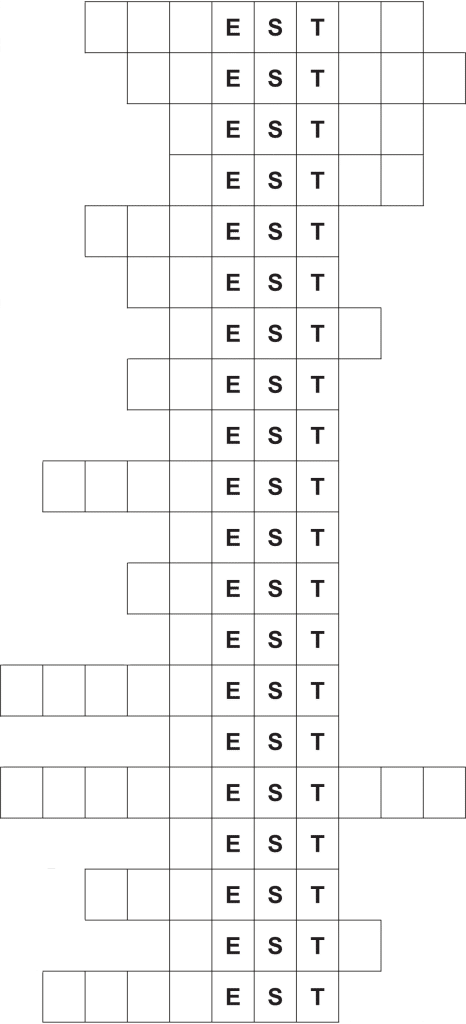What are Crossword Puzzles?
A crossword puzzle is a type of word puzzle that can have many different forms. Some are symmetrical and others are asymmetrical.
They might seem similar to word search puzzles but whereas word search puzzles can go diagonally and backwards, crossword puzzles generally only go horizontally from left to right and vertically from top to bottom.
A typical (asymmetrical) crossword puzzle looks like this:

How to Solve Crossword Puzzles
For each word in the crossword puzzle, you will get a clue. You will also be given the number of letters in the answer word. In some cases, the answer has more than one word and in this case, you will be told the numbers of letters in each word. Important to note is that when you write the answer in the crossword, you don’t write the blanks between the words.
For example, if the clue is ‘city in California (3,7)’ and the answer is Los Angeles, then you would write the answer as LOSANGELES in the crossword puzzle itself.
Also, we don’t differentiate between upper case and lower case letters and generally write all of the answers in upper case, as it makes it easier to read. However, you can complete your puzzles in any way that you find easier!
When you write in an answer, this will give you one or more letters for a different clue. If you’re having trouble with a particular word, skip it and carry on. When you come back to it later, you should have some letters from other answers, which will now help you. If you check out the image above, finding the answer to 2 across will give you the first letter for 3 down.
You can go back to previous clues and complete the puzzle in any order you like. The crossword puzzle is complete when all clues are correctly answered. In this case, there will
There are various types of clue but most are either cryptic or non-cryptic.
Let’s take a look at these in more detail.
Non-Cryptic Clues
These can be factual (e.g. the capital of France, 5) or just a description (e.g. type of cheese, 4).
The factual clues are usually fairly clear (if you know, of course!) but descriptive clues could one of many possible answers. For example, a type of cheese with four letters could be edam or brie (or others, I’m sure). In this case, it might be advisable to write in the answer lightly, so that you can change your mind later, if needed.
Cryptic Clues
With these clues, on the other hand, you can be more confident that you have the correct answer, as they are logically constructed and there is only one answer.
A couple of quick examples should show the idea behind cryptic clues.
Cheese made backwards (4) – any ideas? The answer is a cheese and, as we saw earlier, there are several cheeses with four letters. However, if we read the word ‘made’ backwards, we get ‘edam’, which is the answer. You see how that worked?
HIJKLMNO (5) – what about this one? We can see that it consists of a part of the alphabet, namely from H to O. H to O? That sounds familiar! Of course, H2O is the chemical formula for water, which is the answer (water).
As you can see with both of these quick examples, it is almost impossible to get the answer wrong, as it can derived logically from the clue.
There is also a sort of hidden language behind cryptic clues, with so-called code words, or indicators, which tell you how to manipulate the clue to get to the answer.
For more information on cryptic clues and code words, please check out this page.
How to Solve Crossword Puzzles – Summary
Do you like solving crossword puzzles? Do you have a favourite sort that you particularly enjoy?
Please use the comments below and tell us about it.


